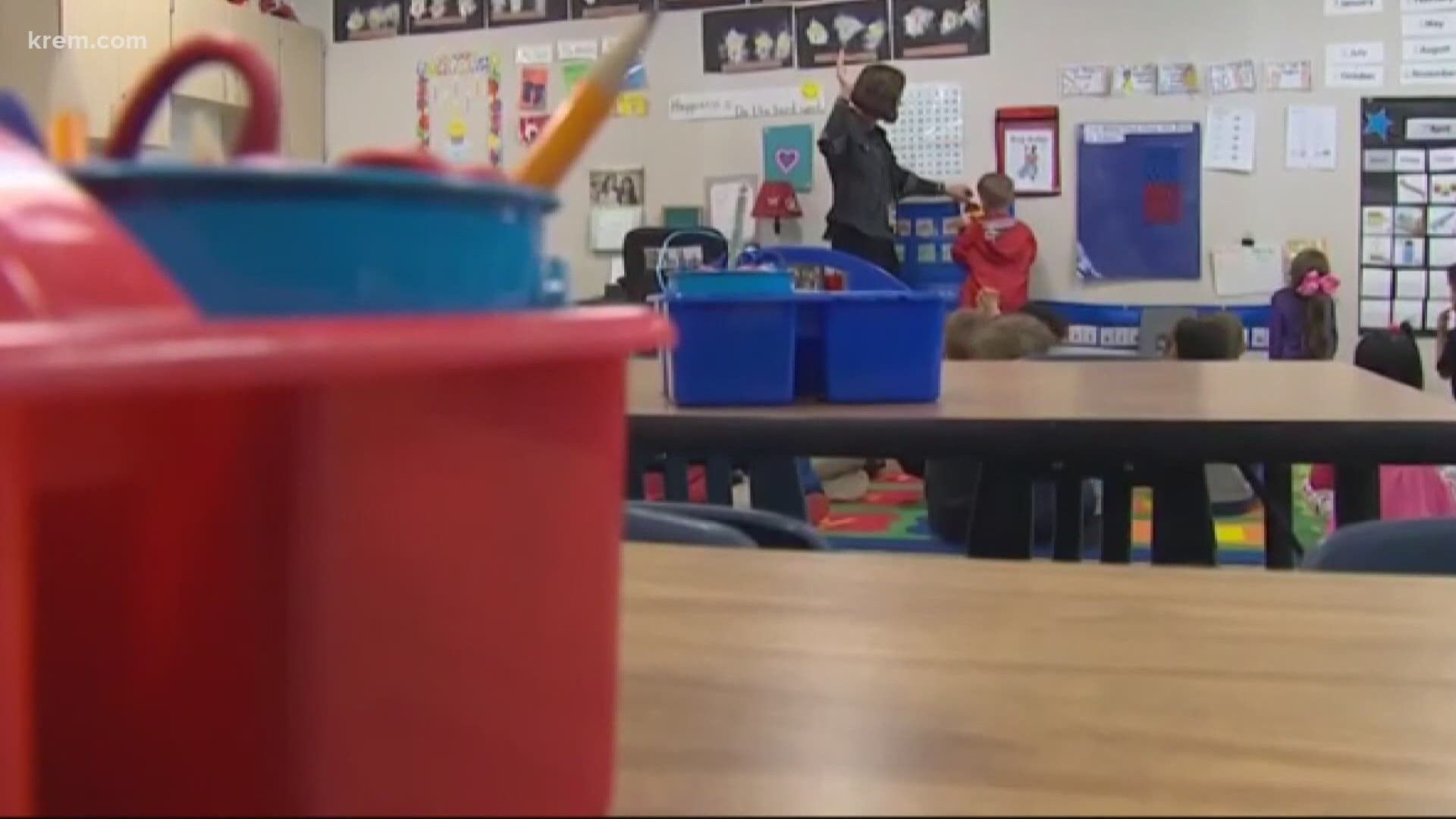SPOKANE, Wash — Spokane Public Schools provided information to parents of students in grades three through five about plans for a return to classrooms on Wednesday night, according to spokesperson Sandra Jarrard.
SPS announced during the meeting that grades three and four will be included in phase one, while grades five and six are in phase two. Middle and high school levels are included in the third and final phase.
Currently, third-graders would be split up in two groups, alternating in-person learning days from Jan. 20-Feb. 2, when all students would return to in-person learning.
For those in phase two, fifth-grader and sixth-graders would start in a hybrid model on Feb. 17.
Phase three would see middle and high schoolers start in a hybrid model on March 1.
This comes after Governor Jay Inslee lowered the bar in December for schools to bring students back into classrooms. Interim Spokane Health Officer Dr. Frank Velazquez also voiced his support for school districts to allow phasing in third through fifth graders for in-person learning starting in mid-January.
In order to phase elementary students back into classrooms, districts must meet certain criteria that includes, but is not limited to, case data evaluations at the district level; ability to maintain contact tracing with a larger student body; a minimum of two-week evaluation periods in-between the phasing in of each grade; and appropriate resources to keep up cleaning and sanitizing requirements, according to the press release. Schools will also have to be prepared to pause phasing in additional grades at any time is data supports the decision.
Governor's guidelines for students returning to school
Under Inslee's recommendations, school districts should make in-person learning available to all students where COVID-19 cases are less than 50 per 100,000 residents over a 14-day period.
In counties where cases are between 50 and 350 per 100,000 residents, districts should offer in-person learning in phases, starting with elementary students not already attending in person and middle school students, Inslee said.
In counties where COVID-19 cases are greater than 350 per 100,000 residents, Inslee recommended districts only offer in-person learning for elementary students and those with the highest needs in small groups of 15 students or fewer. Other students would stay on remote learning.
Under Inslee's new recommendations, older students should be the last groups to return to in-person learning because high school-age students are more susceptible to catching and transmitting coronavirus, Inslee said.
Over the summer, Inslee recommended that schools should move to remote learning only, and cancel or postpone extracurricular activities, if COVID-19 cases were greater than 75 per 100,000 residents over a 14-day period in a given county.
Guidelines from the state Department of Health (DOH) previously recommended that full-time, in-person instruction should only resume when COVID-19 cases in a county are at or below 25 cases per 100,000 residents over a 14-day period.
Activists respond
The SPS meeting comes three weeks after Inslee's initial announcement. The wait is frustrating for many parents and advocates for reopening schools.
"Spokane Public Schools has been disappointingly slow in getting kids back in the classroom, in coming up with a plan," said Joanna Hyatt, an organizer of local reopening activists. "You would've hoped with all this time, that they would've been ready."
Hyatt also expressed disappointment with the fact that the plan will focus on grades 3-5, asking why other grades have to wait to hear about their future.
"What about our middle school and high school kids? We are seeing the mental and emotional fallout in these upper grades of these kids not being in class and not getting to socialize with their peers. And so, again, not enough," she said. "That's great that we're helping younger kids, but at what expense to the older students? And really we should look at education as being K-12... just because a child is older, doesn't mean that this is not impacting them just as much as it impacts somebody who's six or seven."

